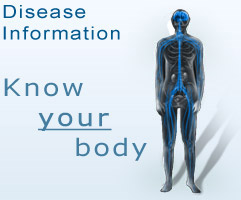Parkinson's Disease
What is Parkinson's disease?
Parkinson's disease is a disease that is characterised by four major symptoms:
- shaking (tremor);
- slowness of movement (bradykinesia);
- rigidity of the limbs or trunk (stiffness and increased resistance to passive movement, i.e. movement due to external force, such as physical therapy); and
- poor balance and postural instability.
When at least two of these symptoms are present, and especially if they are more on one side of the body than the other, a diagnosis of Parkinson's disease is made, unless there are non-typical features that suggest an alternative diagnosis.
Patients may first realise something is wrong when they develop shaking in a limb, movements are slowed, activities take longer to perform, they experience stiffness and have balance problems. Initially, symptoms are a variable combination of tremor, bradykinesia, rigidity and postural instability. Symptoms typically begin on one side of the body and spread over time to the other side. There are many causes of tremor other than Parkinson's disease and it generally requires examination by a neurologist to distinguish between them.
Both younger and older patients may experience initial symptoms for a year or more before seeking medical evaluation. Parkinson's disease affects one in 100 people over the age of 60, with the average age of onset being 60 years. In 5% to 10% of cases, however, the disease starts before the age of 40.
Disease progression
Parkinson's disease is a chronic, progressive disease that occurs when nerve cells in a part of the midbrain die or are impaired. These nerve cells produce dopamine, an important chemical messenger that transmits signals in the brain. These signals allow for coordinated movement. Initially the symptoms are mild - usually on one side of the body - and may not require medical treatment.
Tremors during rest is a major characteristic of Parkinson's disease and the most common symptom, but some patients never develop it. Tremors may be the least disabling symptom, but is often the most embarrassing to the patient. Over time, initial symptoms become worse. When the disorder is such that normal activities of daily living are impaired, at least to some extent, symptomatic treatment begins.
Is Parkinson's disease hereditary?
There is a family history of Parkinson disease in 5% to 10% of patients. In most individuals Parkinson's disease is made up of a combination of genetic and environmental factors.
Diagnosis
There is no test that can prove that you have Parkinson's disease. The diagnosis is based on you having the typical symptoms described above. In the early stages of the disease, when symptoms are mild, it may be difficult for a doctor to say if you definitely have Parkinson's disease. As the symptoms gradually become worse, the diagnosis often becomes clearer.
Parkinson's disease is sometimes confused with other conditions. Some conditions can have 'Parkinsonism‘ features - that is, symptoms similar to Parkinson's disease, but caused by other conditions. For example, some drugs used to treat other conditions can cause side-effects that resemble the symptoms of Parkinson's disease. Some rare brain disorders can also cause similar symptoms.
Therefore, it is normal practice for a general practitioner to refer patients with potential Parkinson's disease to a neurologist, who can refer the patient back to the general practitioner for management after the diagnosis has been made.
Treatment
At present there is medication that helps to control the disease, but no cure. Treatment that is available can help to control the symptoms and maintain quality of life. Several medication items for Parkinsonism exist. Levodopa is the main prescription used, but may be used simultaneously with other medication for the treatment of Parkinson's disease. Combinations of drugs are therefore frequently used.
The medication may have side-effects and this should be discussed with your prescribing doctor. If medicinal treatment fails and the patient is fairly young with severe symptoms, surgical treatment such as the implantation of a deep brain stimulator is sometimes used. The procedure is not always successful and the equipment that is used (prosthesis) may not be paid fully by your medical scheme.
Physiotherapy, speech therapy and light exercise is recommended.
Some other practical points
Stay active. Exercise regularly or as often as you are able to. You may walk more slowly than before, but a daily walk is good exercise and may help to loosen up stiff muscles. Resist the temptation for others to do things for you just because it may be quicker.
Constipation is common in people with Parkinson's disease. Help to reduce the chance of this by having lots to drink. Eat plenty of vegetables, fruit and foods high in fibre.
Make correct use of medication. Make sure you know exactly when to take your medication. Dose schedules and timings are important. A pharmacist will be able to advise and help if you have difficulty in getting tablets out of blister packs, have difficulty in remembering when to take your medication or have any other queries in this regard. Report any suspected side-effects to your doctor.
Medication taken for other conditions can make Parkinson's disease worse. These may be prescribed for such things as mental illness, sickness, vertigo and dizziness. Check with your doctor if you are unsure about any additional medication that you might be taking.
Find out if you are covered when driving. If you are a driver you should advise your local authorities and insurance company if you have developed Parkinson's disease. Your insurance may be invalid if you do not do so. Depending on the severity of symptoms, you may still be allowed to drive following a medical assessment.
Depression is common in people with Parkinson's disease. Depression can cause symptoms that may make it seem as if the disease is getting worse, such as lack of energy and becoming slower. If you seem to become worse quite quickly over a period of a few weeks, depression may be the cause. Tell your doctor if you suspect this. Depression can often be treated.
Some other tips
- It may be easier to get up from a high chair than from a low couch.
- Consider using Velcro fasteners instead of buttons.
- Carry a walking stick when you are out. This may increase your confidence if unsteadiness is a problem.
Internet sources of information
www.parkinson.org;
www.michaeljfox.org;
http://www.patient.co.uk/showdoc/23068879/
References
- National Guideline Clearinghouse: Guidelines to Parkinsonism
- National Parkinsonism Foundation
- UpToDate
- NHS Parkinson's disease website
 TransmedBanner4.jpg)

